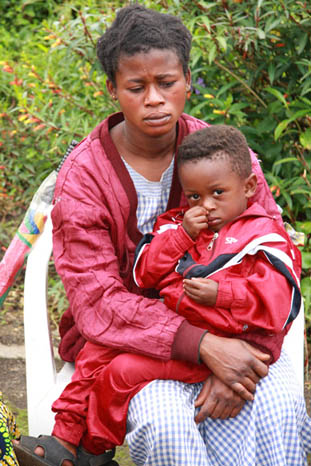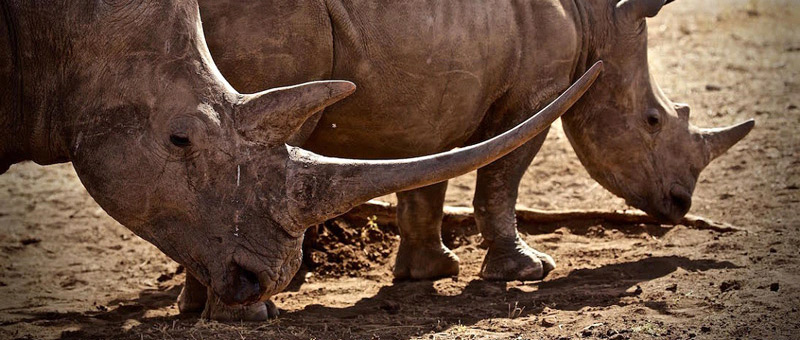
In 2016, the value of wildlife crime, including illegal logging and fishing, was 26 per cent larger than previous estimates, at $91-258 billion today compared to $70-213 billion in 2014, according to a rapid response report published by the United Nations Environment Programme (UNEP) and INTERPOL. According to UNEP, it is the world’s fourth-largest criminal enterprise after drug smuggling, counterfeiting and human trafficking. The amount of money lost due to environmental crime is 10,000 times greater than the amount of money spent by international agencies on combatting it – just $20-30 million.
Offenses like poaching, trafficking in live or dead endangered animals and illegal logging, are complex phenomena where a variety of factors interact – cultural, social, economic and environmental – and often involve different actors.
The causes and the consequences of wildlife crime vary among countries, areas and local communities, but it always threatens the existence of many plant and animal species, hinders sustainable social and economic development, and has destabilizing effects on society.
For most countries, combating wildlife crime is unfortunately not a priority and almost always remains overlooked and poorly understood.
Wildlife offences enrich international criminal groups and enable corruption to flourish. Fraud, counterfeiting, money-laundering and violence are often found in combination with various forms of wildlife crime. The risk involved is low compared to other kinds of trafficking, like drugs, but the profits are very high. It’s now clear that wildlife trafficking has wide national and international security implications, but governments tend to see the problem as just an environmental issue and the global fight to wildlife crime is failing.
Wildlife crime is now the most immediate threat to several species including elephants, rhinos, big cats like tigers, lions and cheetahs, apes, pangolins, reptiles and birds, among many others. This illegal trade is driven by demand for ivory, horn, bones, scales and other parts for carving, ornaments, luxury items, and traditional Asian medicines, trophies, wild bushmeat and even live animals for pets and zoos.
Much of the international wildlife trade today is illegal and this makes difficult to know its exact scale.
Some tragic figures:
Rhinos
Rhinos were once abundant throughout Africa and Asia with an approximated global population of 500,000 in the early twentieth century. The global population fell to 70,000 by 1970 and to just 29,000 in the wild in 2013 (with about 25,000 in Africa and the rest in Asia). In South Africa, home to 83% of Africa’s rhinos and 73% of all wild rhinos in the world, the number of rhinos poached in 2017 was lower than 2016’s, according to South African Minister of Water and Environmental Affairs Edna Molewa. In 2017, 1028 rhinos were killed compared to 1054 in 2016, a decrease of 26 animals (2.5%). For Africa as a whole, the total number of rhinos poached during 2015 was the highest in two decades.
Click here to read about our investigation on rhino horn trafficking in China.

Elephants
Elephants are among the most exploited animals in human history and probably no other wildlife ‘product’ influenced so much the fortune or misfortune of an entire continent like ivory. A few numbers are enough to describe the elephant’s tragedy in Africa:
- 27 million elephants in the early 19th century
- 5 million at the beginning of the 20th century
- around 350,000 – 400,000 today
Just during the last three years poachers have killed an estimate of 100,000 elephants.
Click here to read about our undercover investigation on ivory trafficking in China.

Lions
Over the past 50 years, wild lion numbers in Africa have decreased from over 200,000 to less than 20,000 today. In China, lion bones are soaked in rice wine, in Vietnam and Laos the bones are made into a paste with herbs and used to treat a variety of ailments. Unlawful activities in and around the trophy hunting industry facilitate the poaching and the illegal trade.
In Western Africa the situation is catastrophic. A six years survey in 11 countries found an estimated total of only 250 adult lions occupying less than one percent of that historic range.

Tigers
A hundred years ago, the world’s tiger population stood at a 100,000. There are as few as 3,890 tigers in the wild today (2016). We lost 97% of the world’s tiger population in just one century. Two-thirds of the world’s tigers live in India, where they’ve increased from 1,706 to 2,226 during the past five years.
Poaching has contributed to their status as critically endangered and it is driven by demand for tiger bones and other body parts for use in Chinese ‘medicine’.

Pangolins
It is estimated that over 1 million pangolins were traded illegally over the past decade, making them the most trafficked mammal in the world.
The main threats to pangolins in Asia are poaching and trafficking driven by the trade in their meat and scales, mostly destined for China and Vietnam. In Africa the threats are the same, they are eaten as bushmeat but also illegally traded and shipped to Asian markets, with the complicity of traders in transit countries like Vietnam, Laos and Myanmar.

Apes
 Almost 3,000 live great apes are trafficked from Africa and Southeast Asia each year, and this trade is increasingly impacting wild populations.
Almost 3,000 live great apes are trafficked from Africa and Southeast Asia each year, and this trade is increasingly impacting wild populations.
The report Stolen Apes, which was produced by the UN Environment Programme (UNEP) through GRASP, estimates that a minimum of 22,218 great apes have been lost from the wild since 2005 – either sold, killed during the hunt, or dying in captivity – with chimpanzees comprising 64 per cent of that number.
The illegal trade in orangutans originates in Indonesia (Borneo and Sumatra). They are captured and illegally traded for food and for the domestic and international pet trade.
Latin America: the overlooked and largely underestimated illegal wildlife trade
Wildlife poaching and illegal trade is thriving in Latin America, fuelled by the international markets, animal dealers and collectors in the United States, Europe and Asia.
According to a recent Defenders of Wildlife report, between the years 2004 and 2013, there where nearly 50,000 products and over 7,000 animals from Latin America seized at the U.S. borders alone.
Among the most trafficked wild animals and products from Latin America there are birds (especially parrots), turtles, shark fins, caimans, iguanas, sea cucumbers and totoaba.

Illegal logging
The impacts of illegal logging vary widely, depending on both the scale and the kind of illegal activity.
A research by Chatham House (Lawson & MacFaul 2010) concluded that illegal harvesting represented 35-72% of logging in the Brazilian Amazon, 22-35% in Cameroon, 59-65% in Ghana, 40-61% in Indonesia and 14-25% in Malaysia. Extrapolating from these figures, it was estimated that more than 100 million cubic meters of timber are harvested illegally each year.
Some reports have estimated as much as $17 billion dollars’ worth of illegal trade flows only from the East Asia Pacific region, while in Mozambique, over $20 million were lost to state revenues in 2012 from unpaid taxes on exports to China (EIA 2013).
Illegal logging creates social conflict with indigenous and local populations and leads to violence, crime, corruption, human exploitation and human rights abuses. It is estimated that some 1.6 billion people worldwide depend on forests for their livelihood and 60 million peoples depend on forests for their subsistence.
But the problems are not just in Africa, Asia or South America. According to various sources, American companies and American workers lose an estimated $1 billion each year due to illegal wood entering U.S. markets.

The Human Toll of Wildlife and Forest Crime
The story of the Human Toll of Wildlife and Forest Crime, historically and inexorably linked to the exploitation of local communities and poor people, even before slavery and the ivory trade, needs to be shared with the international community in light of the growing scale of poaching and illegal trade of wildlife, which has now been recognized as a serious organized transnational crime.
This includes:
- People dying and getting injured (e.g., rangers, law enforcement officers, villagers, poachers)
- People encouraged or forced to engage in criminal activities (e.g., breaking the law, possession and use of weapons, bribery, corruption)
- Exploitation of vulnerable and disadvantaged communities
- Families losing the breadwinners (e.g., due to death, injury, incarceration) – Orphans & widows
- Fuelling conflict (e.g., financing terrorism and rebel militia) – see the investigation on ivory and the Somali terrorist group al–Shabaab (http://elephantleague.org/project/africas-white-gold-of-jihad-al-shabaab-and-conflict-ivory)
- Other related criminal activities (e.g., threatening the rangers and their families, money laundering, tax evasion).
- Other human costs of environmental and wildlife crime (e.g., impact on tourism and the economy)

Behind a simple ivory trinket on sale in Shanghai or Hong Kong, a person is getting killed in Africa, a wife loses her husband, a child becomes an orphan or a soldier. Ivory, rhino horn and other illegal wildlife products consumers and traders should be held directly responsible for these murders and social destruction, as well as all those who facilitate the trade. By trading and buying ivory they become de-facto responsible for those deaths.
Forest crime, which is the illegal logging and the international trade in illegally logged timber, has a significant Human Toll as it impedes sustainable development in some of the poorest countries of the world. It costs governments billions of dollars, promotes corruption, and funds armed conflict. The loss of forests is responsible for up to 17% of all human-made greenhouse gas emissions, 50% more than that from ships, aviation and land transport combined.
Illegal logging can also have huge financial implications for a country. According to a report by Human Rights Watch, in Indonesia, illegal logging and forest-sector mismanagement resulted in losses to the Indonesian government of more than US$7 billion between 2007 and 2011.
Illegal logging creates social conflict with indigenous and local populations and leads to violence, crime, corruption, human exploitation, and human rights abuses. It is estimated that some 1.6 billion people worldwide depend on forests for their livelihood and 60 million peoples depend on forests for their subsistence.


